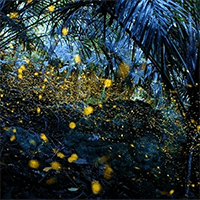- Age 0~Age 100
- 1~2 hours
- 14:00
When you hear that we are a ``mold shop'' that seriously makes things with professional 3D printers in the 10 million class, how many of you are immediately drawn to it? Daimol is one of the few companies in the Hokuriku region that makes molds for making metal parts. Efficiently producing a large number of parts and creating prototypes for that purpose are two different things, even in the same metal processing industry. Molds are made by processing metal, but the essence of being a moldmaker lies in the design that takes place before processing begins. Since we make molds to make something that originally has no shape, we need to know what method to use to create the mold in order to achieve the desired shape, what kind of drawings are needed for that purpose, and the modeling process used to create the mold. It's work. In this program, participants will attend a graduate school to obtain an MBA, and will learn ideas for innovation and thinking methods for creating products through a workshop led by Daimol representative Kenta Osugi, who will help them realize what they want to create and design it. With support, you can model and finally create a shape using a 3D printer. We are looking forward to hearing from anyone who wants to take on the challenge of making something seriously using a professional 3D printer that the general public does not usually see! ! <Time schedule> 13:50 Reception 14:00 Check-in 14:10 Factory tour 14:40 Workshop 15:45 Presentation/discussion
- Age 6~Age 99
- Within 1 hour
- 10:00 / 13:30
~The world of vegetable dyes that are safe for children and sensitive skin~ We create ethical lifestyle products that are kind to people and nature using natural raw materials, such as textile products dyed with vegetable dyes and towels woven from Japanese paper fibers. green job. In this program, Green Job's atelier, which is usually closed to the public, will be opened to the public, and you will be able to experience bag dyeing using a mug using vegetable dyes that are safe for children. The material and dye are made from the same hemp paper as the face towels and body towels manufactured by Green Job, making it an easy bag dyeing experience.
- Age 16~Age 99
- 1~2 hours
- 10:00 / 14:00
The back side of the colorful color. Among the many "traditions" and "evolutions" of Nishikiyama kiln, there are many fans in the world view and charm of the work, and we pursue "Kinrande" works using gold leaf that we create independently. Kinrande kiln. The second generation owner, Minori Yoshita, is widely known as a living national treasure of Kutani ware. In this program, you can see the inquisitive spirit transmitted to the Nishikiyama kiln and experience a part of it in order to demonstrate the creativity that can be said to be a transcendental technique that looks very profane. Nishikiyama kiln with a history of over 100 years. In addition to traditional techniques, we are also working on new things in the face of the big question, "How will we deliver it in the next 100 years?" We will review traditional techniques, search for a way that is suitable for our current life, and train the staff of the kiln. Nishikiyama kiln manufacturing aims to integrate tradition and innovation. "Kinrande" Kinrande refers to the decorative technique of fixing gold on colored ceramics and its works. Beginning with the Song dynasty in China, it flourished from the Ming dynasty to the Qing dynasty. In Japan, the Kinrande appeared from the Genroku era of Edo, using the Ming dynasty's Jingde Town kiln as an example, and it resembled the "Kinrande" woven fabric woven with gold thread and cut gold leaf, so it came to be called by this name in Japan. rice field. There are techniques such as "drawing gold" to draw a line with gold paint, "swinging gold" to scatter gold powder, and "pasting gold" to paste gold leaf. * For foreign nationals: Information on the day will be in Japanese only.
- Age 13~Age 99
- 1~2 hours
- 10:00 / 14:00
The back side of the colorful color. Among the many "traditions" and "evolutions" of Nishikiyama kiln, there are many fans in the world view and charm of the work, and we pursue "Kinrande" works using gold leaf that we create independently. Kinrande kiln. The second generation owner, Minori Yoshita, is widely known as a living national treasure of Kutani ware. In this program, you can see the inquisitive spirit transmitted to the Nishikiyama kiln and experience a part of it in order to demonstrate the creativity that can be said to be a transcendental technique that looks very profane. Nishikiyama kiln with a history of over 100 years. In addition to traditional techniques, we are also working on new things in the face of the big question, "How will we deliver it in the next 100 years?" We will review traditional techniques, search for a way that is suitable for our current life, and train the staff of the kiln. Nishikiyama kiln manufacturing aims to integrate tradition and innovation. "Kinrande" Kinrande refers to the decorative technique of fixing gold on colored ceramics and its works. Beginning with the Song dynasty in China, it flourished from the Ming dynasty to the Qing dynasty. In Japan, the Kinrande appeared from the Genroku era of Edo, using the Ming dynasty's Jingde Town kiln as an example, and it resembled the "Kinrande" woven fabric woven with gold thread and cut gold leaf, so it came to be called by this name in Japan. rice field. There are techniques such as "drawing gold" to draw a line with gold paint, "swinging gold" to scatter gold powder, and "pasting gold" to paste gold leaf. * For foreign nationals: Information on the day will be in Japanese only.
- Age 10~Age 99
- 3~4 hours
Arrange flowers in Yasokichi's vase, eat from Yasokichi's vase, and let the story bloom. Until now, many craftsmen involved in Kutani have studied under the first and second generation Yasokichi Tokuda, and many master craftsmen of yesteryear have also trained at this kiln. Mr. Yasokichi Tokuda, the 4th generation owner of Kutani ware. Together with Yasokichi 4th, who continues to create pottery energetically, he says, "We are born from the earth and return to the earth. We use earth, our mother earth, as a material, and then return to the earth." , By arranging flowers in Yasokichi's works and actually using them as vessels, it is a program where you can enjoy Kutani ware not only by watching but also by fully using your five senses. *For foreign nationals: Information on the day will be in Japanese only.
最近チェックしたプラン
Please wait a moment
![[GEMBA Monozukuri Expo 2023] 3D modeling at the “mold shop that gives form to your ideas”!の画像](https://img.activityjapan.com/10/51066/10000005106601_gfrlJ0xj_3.jpg?version=1695997573)
![[GEMBA Monozukuri Expo 2023] You can do it with a mug! Easy dyeing experience with natural plant dyesの画像](https://img.activityjapan.com/10/51023/10000005102301_D6tMutJM_3.png?version=1695900060)
![[GEMBA Monozukuri Expo 2023] Immerse yourself in the world of beautiful glazed gold colors created by living national treasures with a gallery tour and brocade experienceの画像](https://img.activityjapan.com/10/51016/10000005101601_X9MeawNo_3.jpg?version=1695888317)
![[Ishikawa/Komatsu City] KUTANism 2023 Workshop Tour: Immerse yourself in the beautiful world of glazed gold color created by a Living National Treasure, gallery tour and Kinrande experienceの画像](https://img.activityjapan.com/10/50978/10000005097801_X9MeawNo_3.jpg?version=1695703882)
![[Ishikawa / Komatsu City] Kutani ware experience tour to enjoy with 5 senses with Yasokichi Tokuda 4th generationの画像](https://img.activityjapan.com/10/44399/10000004439901_NVjZIr6f_3.jpg?version=1664778782)







